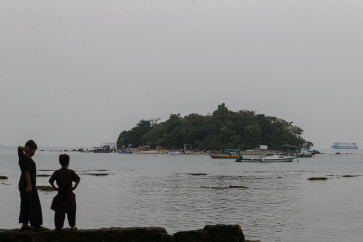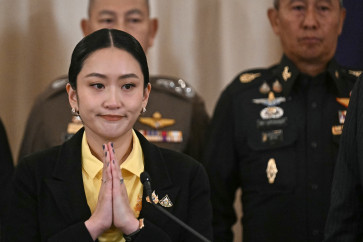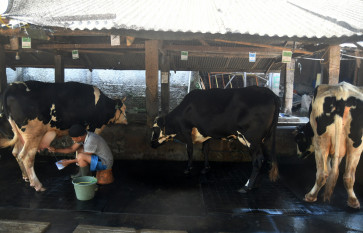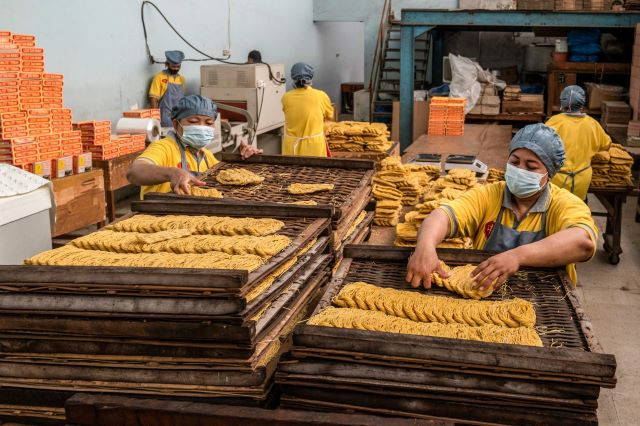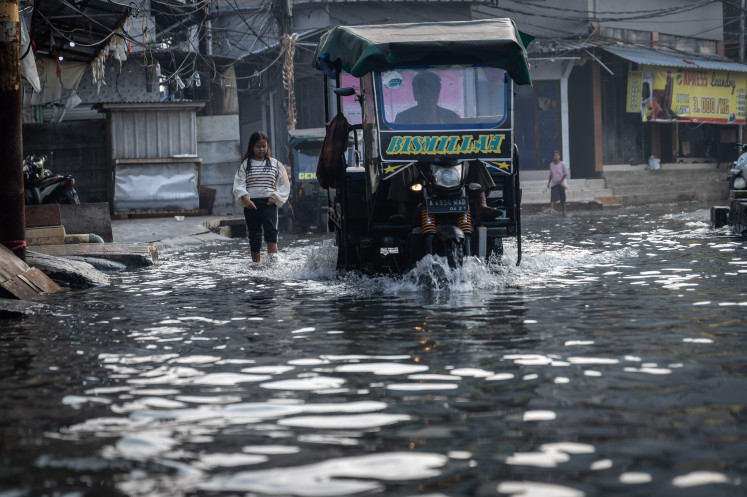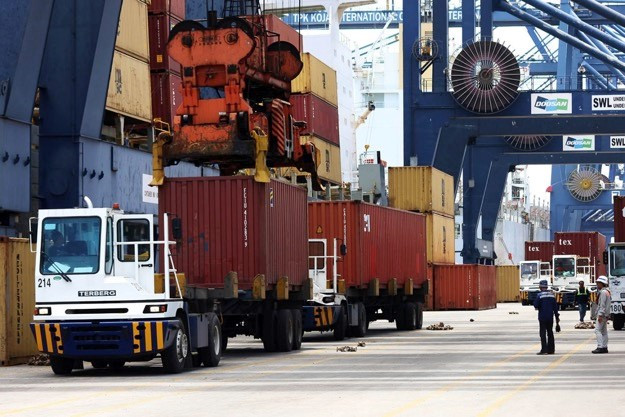Popular Reads
Top Results
Can't find what you're looking for?
View all search resultsPopular Reads
Top Results
Can't find what you're looking for?
View all search resultsPertamina to help LPG subsidy with new program
State energy giant Pertamina expects that its new strategy to market nonsubsidized liquefied petroleum gas (LPG) in small canisters will help improve the distribution of the subsidized ones as targeted by the government
Change text size
Gift Premium Articles
to Anyone

S
tate energy giant Pertamina expects that its new strategy to market nonsubsidized liquefied petroleum gas (LPG) in small canisters will help improve the distribution of the subsidized ones as targeted by the government.
Since more than a decade ago, the government has been distributing 3-kilogram LPG canisters, which are mostly used for cooking by lower-income residents and popularly known as “LPG melons” due to their green color.
However, as Pertamina has no clear supervision mechanism to control the buyers of the subsidized LPG canisters, the supply has become scarcer in the market.
Based on Pertamina’s findings on the ground, the subsidized 3-kg LPG canisters are also used by people who are not eligible for the subsidy because of the wide distribution, indicating that the government’s gas supply subsidy is missing its target.
Theoretically, people ineligible for the LPG subsidy should buy the nonsubsidized 12-kg canisters.
Pertamina then decided to distribute the nonsubsidized 3-kg gas canister to cater to the growing demand among the upper-middle class, which is not eligible for the subsidy, but in favor of smaller canisters compared to the 12-kg ones widely available on the market.
In order to differentiate them from the subsidized ones, Pertamina made the nonsubsidized 3-kg canisters pink in color and named them Bright Gas. They are complemented with double spindle valves, a new technology that prevents leakage.
Pertamina corporate secretary Syahrial Mukhtar said the company decided to create the new program as it wanted to fulfill demand for 3-kg LPG canisters — which are deemed practical as they are easy to handle compared to 12-kg ones — while also reducing possibilities of the government subsidy missing its target.
He said the new program was still in the pilot project phase as Pertamina had only disbursed 5,000 3-kg nonsubsidized canisters since July 1 in Jakarta and Surabaya, each receiving 3,000 and 2,000, respectively.
Syahrial said Pertamina needed three to six months to determine whether the new product was well received in the market as targeted before deciding to implement it nationwide.
“Once the pilot [project] is finished, we will know how big the impact of this product is to help reduce the problem of subsidized LPG missing its target,” he said.
Pertamina acting president director Nicke Widyawati said previously that many people living in cities, particularly those who reside in apartments, needed 3-kg LPG canisters due to their practicality for daily use, but they were ineligible for the government subsidy.
Pertamina set the price of refilling the canisters at Rp 39,000 (US$2.73), more than double the retail price of refilled subsidized ones, which is around Rp 16,000 per canister. Meanwhile, the price for a new canister is set at around Rp 180,000.
As of May, the realization of 3-kg subsidized LPG had reached around 2.6 million metric tons (MT), or 41 percent of this year’s quota at 6.45 million MT. The number is likely to have jumped to date as during the holy month of Ramadhan, which falls in June, household gas consumption is usually at its peak rate.
As for 2019, the Energy and Mineral Resources Ministry has proposed to increase the volume of subsidized LPG up to 6.9 million MT, or around 500,000 MT higher than 6.45 million MT outlined in the 2018 state budget.
Aside from pinning its hopes on Pertamina’s new product, the government is also seeking a better method to improve the distribution of subsidized LPG next year through digitization.
Djoko Siswanto, director general of oil and gas at the ministry, said the government was currently considering distributing the gas subsidies either through a closed-distribution or a cash-transfer (BLT) program, the latter of which had historically been deemed unfair to people in outermost regions.
“If we use the first option, then we should determine who the recipients are; it means we need to supply [them] with [recipient] cards [to identify them],” he said, referring to a card similar to a Social Affairs Ministry program for people in need called the Family Hope Program (PKH).
However, Bhima Yudhistira Adhinegara, an economist at the Institute for Development of Economics and Finance (Indef), doubted that Pertamina’s nonsubsidized LPG program would effectively reduce the number of ineligible consumers buying subsidized canisters as the price gap was too high.

